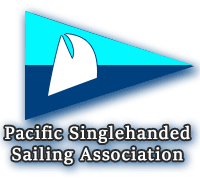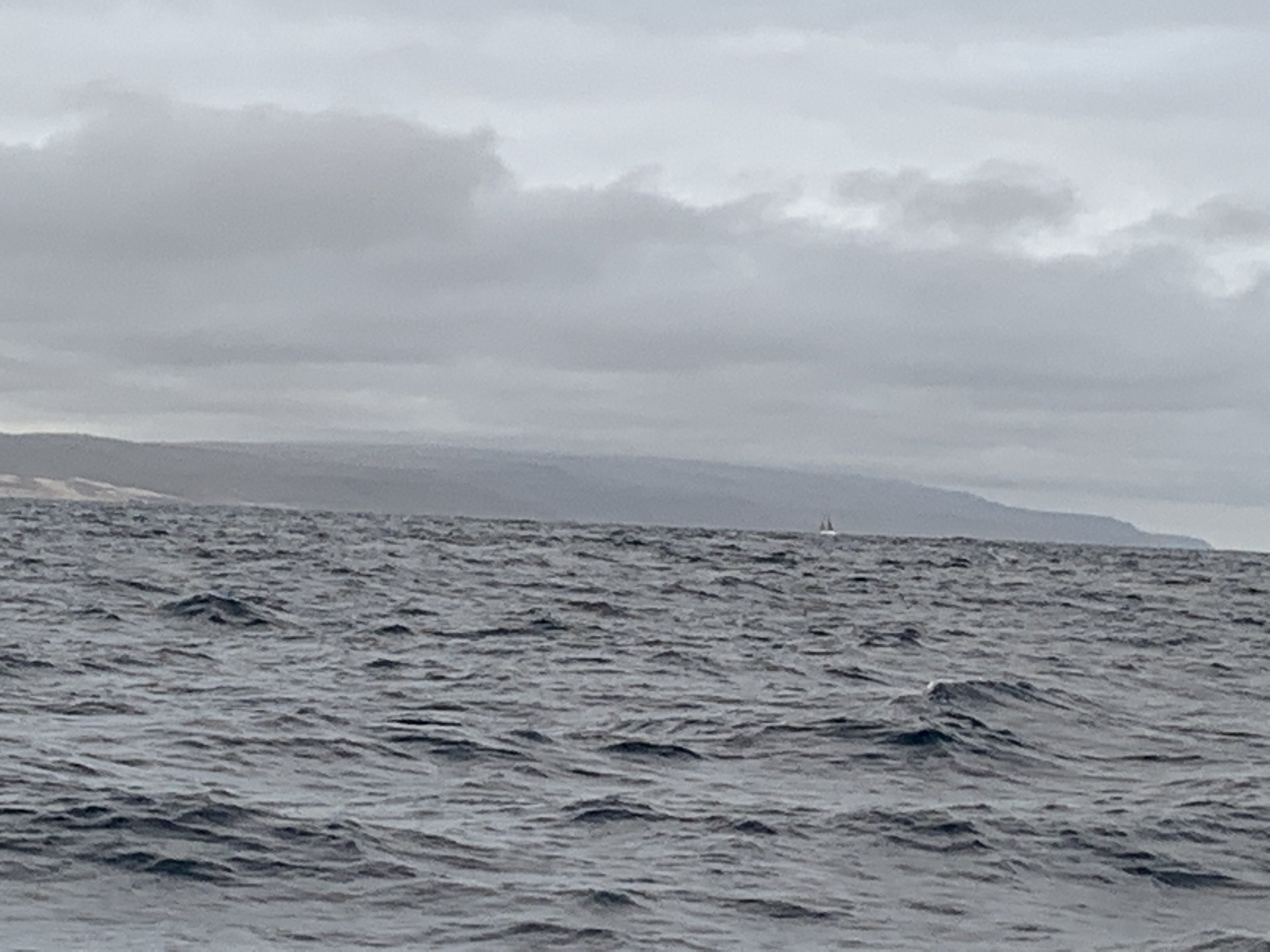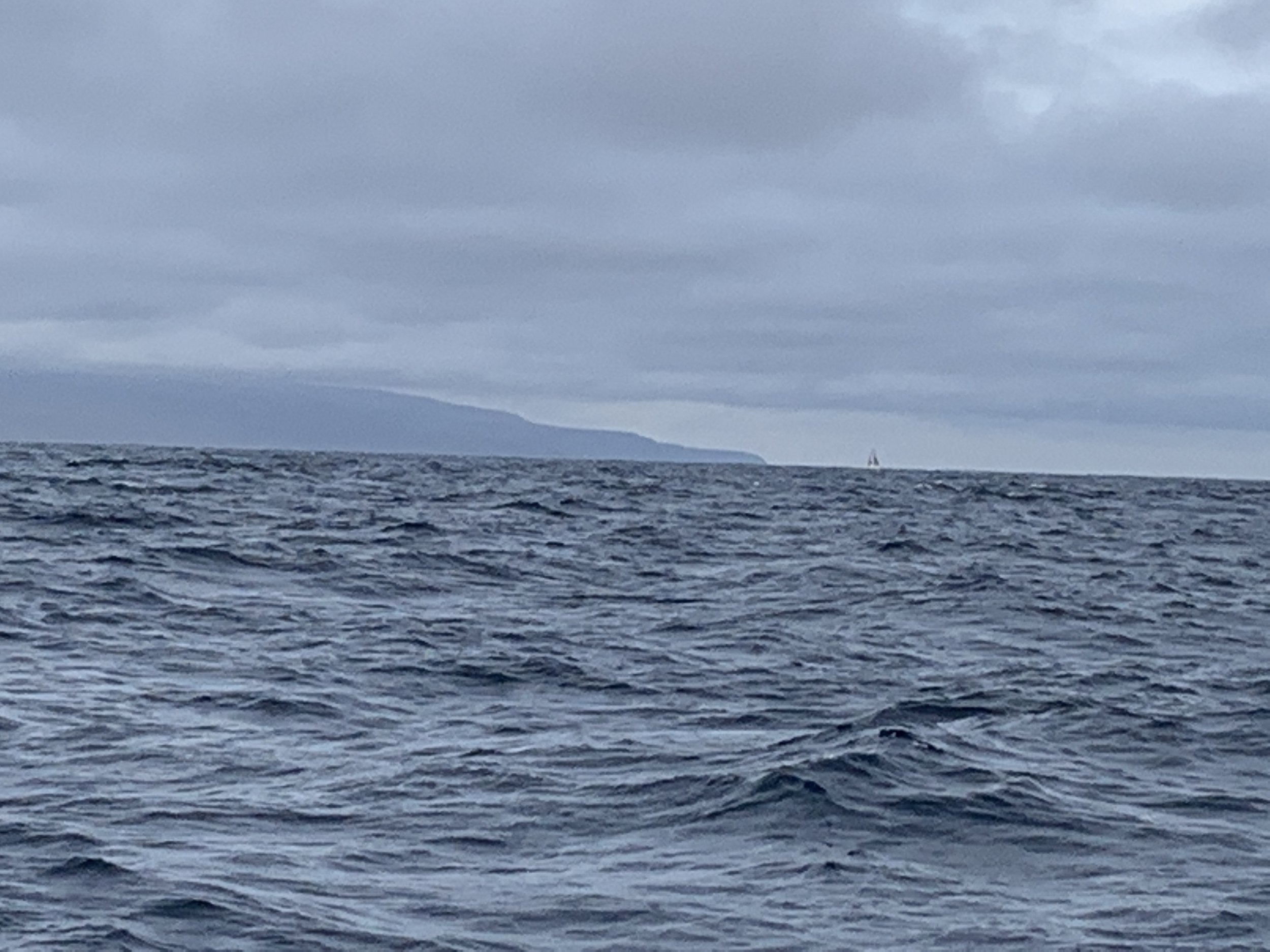Begg Rock Race, a perspective from aboard S/V Reverie by Alex Benderskii
2022 Begg Rock race from aboard s/v Reverie
By Alex Benderskii
There was eager anticipation mixed with some anxiety in the lead-up to the 2022 Begg Rock race. This year, I got new sails and electronics and for the first time felt that I could try to sail the boat close to its potential. The weather forecast looked a bit iffy: a front was coming from the Pacific Northwest down the coast, supposedly bringing winds up to 40 kts; if it got here even half-a-day before the model prediction, we could be caught out in some serious blow. This was much discussed during the week before the race, and the final decision to go ahead was made just before the skipper’s meeting on Thursday 3/17. I had to make the call before that as it takes me about 8 hrs to get to Marina del Rey from my slip in Wilmington, so I decided to leave Thursday morning and if the race gets cancelled, I’d just have a nice couple of days on the water. I have not had the boat out since the Bishop Rock race in February.
Reverie is a 1972 Tartan 41, a ‘classic plastic’ designed by Olin Stephens, with beautiful hull lines but also a lot of ‘old boat stuff’ going on. One of these is the Yanmar diesel: rather underpowered (35 hp for an almost 20,000 lb boat = motoring speed around 4 kts), it also has an annoying habit of shutting down at the most inopportune moments. This time, after motor-sailing flawlessly for 8 hours out of Angels Gate and around Palos Verdes, it died just after I entered Marina del Rey around 5 pm on Thursday, right in the middle of the main channel! I was able to re-start it after a nervous 10 min, but it made for some entertaining watching of my AIS transponder track on the chart (as I heard from club members before the skipper’s meet). So next morning (Fri 3/18) I made sure to leave a bit earlier, and fortunately got to the start at the Malibu pier with no incidents around 10:30 am.
The race started at 11:00 am in pleasant hazy sunshine and light westerly winds (about 5 kts), not ideal for a heavy boat like Reverie. We only passed Santa Barbara Island around midnight. After that, the wind began to build up as we were getting out of the Pt. Conception shadow. The new sails were drawing beautifully (thanks Harry Pattison and Ian Elliot of EP Sailmakers!) and Reverie was in her element, going upwind and into some chop. The wind was West with not much North in it, so I have been trying to go as close as possible and hoping to get a lift to clear the mark. That did not happen, and I decided to make one long tack around 7 nm from San Nicholas Island. Virtu (a Sunfast 3200, skippered by our commodore Tom Wilson and crew Ian McCallum), the only other boat left in the race, was able to make a more up-wind track, and we would have a close crossing to see who was ahead.
By that time, both the wind and seas built up so we were closed-hauled into 18-20 kts and 5-6 foot steep short-period wind swell, which made it pretty uncomfortable even in a sea-kindly boat like Reverie. I tacked, set the Pelagic autopilot on the new course, and was trimming in the genoa when I heard a loud boom. It sounded like an accidental jibe. I caught myself thinking “I just tacked, close-hauled, I could not have possibly jibed now!” I looked up and saw mainsail loose and boom swinging freely way to leeward. The cast bronze toggle on my old traveler exploded and the fiddle block of the main sheet was just hanging under the boom. Yikes! Luckily, I have preventer lines rigged permanently on both sides, so I was able to use the windward preventer as a “German mainsheet” of sorts. This couldn’t trim the main properly, but combined with the boom vang, was able to hold it so that it would not flog, and actually provided the right amount of twist so that the main wouldn’t be overpowered. Anyhow, going upwind, the headsail is Reverie’s primary driver. I decided to make do with that for now and wait until daybreak to see if I can make repairs.
Once on the port tack, the seas continued to get even more uncomfortable, and there was now solid water rolling over the deck regularly, so I think the chop was getting up to 7-8 feet. I have a Dorade vent system that goes around the salon. Unfortunately I forgot to remove the cowl in front of the mast, or at least turn it backwards (the hindsight is 20-20!). Sure enough, the cowl scooped up a wave, the whole Dorade box got flooded, and was showering down the leeward vent in the salon a gallon at a time as the boat rocked. My leeward bunk and everything on it got soaked. Not very conducive to taking naps!
I felt the rig straining under the shock loads of pounding waves, and was glad that I recently replaced shrouds and turnbuckles (by the way, also old cast bronze pieces). I had to continue on port tack for about 2 hrs, until I was sure I’d safely clear the Begg Rock without pinching, then tacked back to starboard. After 2 more hours, getting to the rock and rounding it just after sunrise felt like a well-deserved relief. With San Nicholas island (some 5 nm away) barely visible through the fog bank, Begg Rock really appeared as a solitary oddity in the middle of the ocean!
After turning downwind, the motion instantly got more comfortable, and I was able to look around the boat. I found a piece of dyneema string thin enough to fit through the traveler car fitting, and was able to lash the fiddle block back on. With multiple loops of dyneema it’s probably 5 times stronger than the old bronze toggle.
I have just received a new downwind A2 asymmetrical spinnaker a couple of weeks earlier, and was keen to give it a try, but decided that the current sea state and 15-20 kts of wind was too much (the A2 is almost 1,500 sq. ft!). So I unfurled the genoa, setting up whisker pole to prevent it from flapping. Less than ½ hr later, I heard a pop and saw the genoa flailing about, half of the old aluminium whisker pole banging about in the water – it just snapped clean in half! Uggh, another casualty! (It seems I’ve been going through the old equipment and breaking them one by one – there is a long list from previous races. I guess that’s part of off-shore sailing!) I hurried to fish out the half-pole from water before it scratched the hull, took down the remaining piece, and lashed them to the deck. Now, I could not use the full genoa as it would flap too much, so the mains’l became the primary driver downwind. Virtu, which rounded the rock only a couple of miles behind me, was now gaining with their code zero set.
Brian Radamaker on Rad (Beneteau First 30) unfortunately had to turn around just before Santa Barbara Island after a bunch of kelp got hooked on his keel. I had a close encounter as well: after leaving San Nicholas Island, Reverie passed within feet of a large kelp paddy (some 30 feet across). I was down below and came up only moments before coming onto it. It was so dense that a couple of sea lion pups were able to climb on top of it, looked at me, and dove down, just like kids playing!
Virtu, under code zero, was doing up to 10-11 kts downwind, but had to sail a wider angle, while I just sailed the rhumb line. Somehow, Reverie got to the Tanner Bank buoy mark just before them. We turned towards the East End of Catalina around 2:30 pm on Saturday 3/18, hoping that the wind will hold as forecast and not pipe up too much. From that point, we sailed withing sight of each other. As we passed the West End of San Clemente island, I snapped a couple of photos of Virtu with the last sun light of the day.
The wind held and then eased to around 15 kts, and the seas calmed down a bit, so we were able to get to the finish gate near Catalina’s East End around 10:30 pm without any unwanted drama. Virtu passed Reverie after San Clemente and finished about 1 nm ahead. There was fog and drizzle around Catalina, and the moon was not up yet, which made it feel dark and eerie. I could barely make up Virtu’s mast light even though it was only a mile away, and the steep outline of the Catalina’s East End became visible under the cloud only when we were within a mile. We motored around to Whites Cove for some much needed rest. Catalina’s leeward side is such a tranquil place – I always feel completely rejuvenated after a good night’s sleep on a mooring there!
P.S. The forecast worries were not completely unfounded – when I got back to my slip in Wilmington Sunday afternoon, my wind instrument registered a 30 kts gust!





